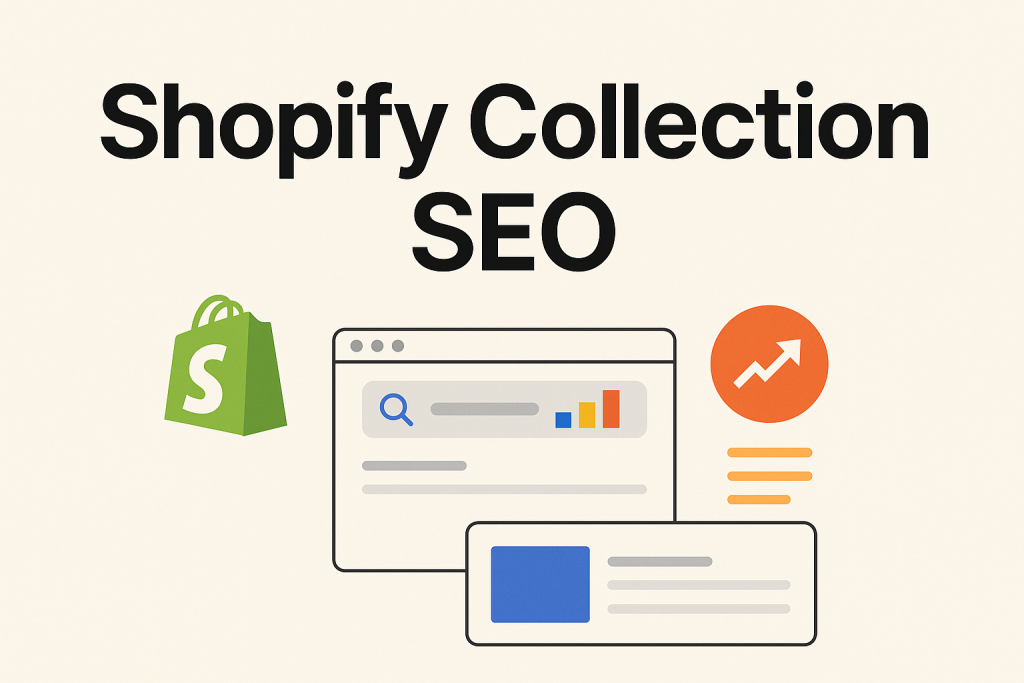Struggling to get your large website noticed on Google? Enterprise SEO can help big companies improve their online visibility and search rankings. This guide will show you how it works, why it matters, and what strategies drive success.
Keep reading to unlock the power of Enterprise SEO!
Enterprise SEO
Enterprise SEO focuses on improving search engine rankings for large websites. These sites often belong to big businesses, like publicly traded companies or e-commerce giants. Think of platforms like Amazon with 686 million monthly visits or Microsoft with 516 million visitors each month.
It helps manage massive operations, covering hundreds or even millions of pages.
This type of SEO works best for complex setups—multilocation businesses and organizations handling multiple sites. It ensures better online visibility while driving organic traffic at scale.
Big results need strategic planning, which leads directly into how it varies from traditional methods!
How Enterprise SEO Differs from Traditional SEO
Enterprise SEO operates on a much larger scale than traditional SEO. It demands teamwork, precision, and strategies built for massive websites.
Scale of operations
Large-scale websites like Amazon and Microsoft handle massive operations. Amazon has 275 million ranking pages and sees 686 million visits monthly. Microsoft gets an impressive 516 million visits each month.
Managing such huge sites requires advanced technology, global coordination, and a sharp focus on ranking high across many markets.
These operations are more complex than traditional SEO for smaller sites. They cover numerous products, services, or content in multiple regions and languages. Handling this size needs scalable solutions to keep everything running smoothly without losing search traffic or visibility.
Collaboration across teams
Teams must work together for successful enterprise SEO. Taxonomy, branding, and legal departments need alignment. Weekly team meetings help bridge these gaps. Office hours offer a space to solve issues fast.
Collaborative events spark new ideas among crossfunctional teams.
Success comes from communication, said many great leaders, probably.
Focus on automation and scalability
Automation cuts manual tasks, making work faster and smoother. Large platforms like Google or Adobe can sync data for better efficiency. This saves time on repetitive jobs, letting teams focus on big-picture plans.
Scalability handles growth without extra headaches. Tools help manage thousands of web pages with ease. Automation also boosts performance tracking. It keeps analytics sharp even as content grows over time.
Key Components of Enterprise SEO
Enterprise SEO needs strong foundations to tackle big challenges and deliver lasting results.
Technical SEO
Technical SEO focuses on fixing backend issues that impact site performance. Tasks include improving crawl budget, creating XML sitemaps, and optimizing page speed. Canonical tags help avoid duplicate content problems.
Securing HTTPS ensures safety for users and builds trust with search engines.
Ensuring strong Core Web Vitals improves user experience and rankings. Mobile-friendliness also plays a key role in modern SEO strategies. Structured data markup like schema helps generate rich snippets, boosting click-through rates.
Addressing indexing issues keeps pages visible in search results efficiently.
Content strategy
Strong content strategy builds the backbone of enterprise SEO. Collaborate with subject matter experts to create valuable, original pieces. Avoid copy-pasting ideas from competitors.
Empower your writers by giving them detailed briefs and data on search trends, audience behavior, and user intent.
Track performance regularly to spot declining pages. Refresh struggling content that’s lost traffic over 6–12 months instead of scrapping it entirely. Focus on keyword research that aligns with audience needs while keeping engagement front and center.
These steps drive organic traffic and meaningful audience connections without wasteful efforts.
Link building
A strong content strategy sets the stage, but link building boosts your site’s authority. Redirect old URLs with valuable backlinks to keep their power intact. Use tools like Site Explorer to find “404 not found” pages and fix them quickly.
These errors waste opportunities for value retention.
Creating linkable assets draws natural backlinks from other sites. Recover unlinked brand mentions by turning them into backlinks instead of missed chances. This strengthens your backlink strategy while improving organic search traffic over time.
Data-driven decision-making
Using data for decision-making helps improve SEO strategies. Tools like Ahrefs analyze competitor content, showing what works and where gaps exist. Tracking performance in Google Sheets or Airtable highlights trends and areas to target.
Keyword research uncovers terms driving organic search rankings. Ranking analysis pinpoints areas needing focus to boost visibility. This approach ensures every action is backed by clear numbers, not just guesswork.
Enterprise SEO Strategies for Success
Big companies need smart SEO tricks to stay visible online. These strategies help handle huge websites and solve tough challenges quickly.
Creating programmatic content
Programmatic content scales fast with less manual effort. Use tools like Content Gap to find opportunities in your sales funnel. This method helps cover both top-funnel and bottom-funnel content needs, expanding the pipeline effectively.
It automates creation for product descriptions, location pages, or FAQs without losing quality.
Focus on balancing different stages of customer interest. For instance, generate blogs targeting broad searches while crafting detailed guides for decision-ready buyers. Leverage templates to maintain consistency while producing a high volume of optimized material quickly.
Optimizing crawl budget
Programmatic content creates a large volume of pages. Search engines may not crawl and index them all efficiently. To fix this, focus on crawl optimization strategies.
Streamline your website structure. Use clean URLs and avoid orphan pages. Block low-value pages like outdated tags or search results with robots.txt or meta directives. Address indexing issues by prioritizing essential pages for crawlers using an indexing strategy.
Internal links should guide bots toward high-priority content, boosting page prioritization and SEO performance overall.
Building internal links
Internal linking strengthens website structure and boosts SEO. Use Ahrefs’ INTERNAL LINK OPPORTUNITIES report to find gaps quickly. Link related pages naturally to help users and search engines navigate your site better.
Avoid vague anchor text like “click here.” Instead, use descriptive phrases tied to keywords, such as “enterprise SEO tactics” or “internal linking strategies.”.
Focus on semantic relevance when placing links. Connect pages that share themes or topics for a smoother user experience. For example, link enterprise case studies to services pages for added depth.
Add internal links in blog posts, product descriptions, and landing pages regularly. Keep it simple but consistent—too many links can confuse readers instead of helping them!
Leveraging schema markup
Schema markup makes your website easier for search engines to understand. It uses structured data to highlight key details, improving your site’s visibility in search results. Rich snippets, like star ratings or product prices, often appear because of this markup.
Adding semantic markup can boost user experience and SERP features. For example, restaurants can show menus directly on Google Search. Prioritize schema implementation alongside Core Web Vitals and HTTPS for better performance and rankings.
Benefits of Enterprise SEO
Enterprise SEO helps big businesses grow online faster. It boosts your site’s power to attract and keep visitors.
Improved brand visibility
Improving online visibility boosts brand awareness. Strong search engine optimization (SEO) helps your website rank higher on search engines like Google. This makes it easier for people to find your business when searching for services or products you offer.
An enhanced digital presence strengthens trust with customers. It also supports other marketing efforts, such as retargeting ads, by providing more data and reach. Better rankings mean more organic traffic, which drives recognition without extra ad costs.
Increased organic traffic
Stronger brand visibility leads to increased organic traffic. High-ranking pages on Google often rank for about 1,000 related keywords. This means more users find your site while searching for answers.
About 90.63% of webpages get no clicks from Google search results. Enterprise SEO changes this by improving keyword rankings and creating content that attracts clicks. Better search engine optimization makes your website appear higher on the SERP, leading to more visitors without paid ads.
Cost-effective marketing at scale
Enterprise SEO drives organic traffic without spending heavily on ads. It reduces customer acquisition costs by targeting the right audience with optimized content. This strategy boosts online visibility, making it easier for people to find your brand through search engines.
Automation and data tools power large-scale campaigns efficiently. For example, keyword research software helps identify trends quickly, saving time and effort. The result? More clicks, less money spent—perfect for maintaining a solid marketing strategy while staying within budget.
Enhanced competitive edge
Standing out in crowded markets can feel like fighting for a spotlight. Enterprise SEO strengthens your online presence, giving your business a clear advantage. Companies using these strategies often rank higher on search engines, making them industry leaders.
Improved visibility attracts the target audience and positions businesses as trusted experts.
A strong digital marketing strategy with enterprise SEO helps brands compete broadly. It improves market positioning by driving consistent organic traffic while staying cost-effective.
With better content optimization and smart marketing tactics, companies gain an advantage that smaller operations find challenging to match.
Enterprise Technical SEO Tactics
Fixing technical SEO issues can feel like untangling a messy set of wires, but getting it right keeps your site running smoothly—let’s break it all down.
Fixing indexing issues
Indexing issues often block site pages from appearing in search engines. Start with an indexing problem diagnosis to spot trouble areas. Common culprits include broken links, duplicate content, or incorrect robots.txt settings.
Use tools like Google Search Console to check which pages are excluded.
Address technical SEO troubleshooting by reviewing XML sitemaps for errors. Large enterprise websites face these issues due to complex infrastructure SEO setups. Optimize crawl budget by prioritizing high-value URLs and removing outdated ones.
Regular checks help maintain enterprise search engine visibility and avoid traffic drops caused by improper page indexing configurations.
Addressing JavaScript SEO challenges
JavaScript can block search engines from reading your site. This hurts rankings and traffic. Search bots often struggle with rendering JavaScript-heavy pages, leaving content invisible to them.
To fix this, focus on server-side rendering or dynamic rendering. These methods help present fully rendered pages to bots. Prioritize Core Web Vitals too for better performance. Improve page speed, enhance mobile usability, and secure the site with HTTPS encryption.
Tools like Google Search Console can flag indexing issues caused by JavaScript errors.
Optimizing ecommerce product pages
Enhance product description pages by adding clear, engaging content. Include customer reviews to boost trust and conversions. Avoid using duplicate descriptions from manufacturers; instead, focus on crafting original ones that highlight key features and benefits.
Manage faceted navigation wisely to prevent duplicate content issues. Use proper pagination techniques to improve crawlability for search engines. Handle out-of-stock pages with care by redirecting them or offering alternatives to keep users engaged.
Managing website migrations
Website migrations can trigger indexing challenges and ranking drops. Fixing these issues early is critical. Adjust the website structure to avoid content duplication. Tools like Screaming Frog help spot broken links or redirect errors fast.
Work with subject matter experts during planning. A solid migration strategy includes testing environments and live rollout steps. Focus on indexing optimization and keeping search engines informed of changes, such as using updated sitemaps or 301 redirects properly.
Enterprise Content and Link Building Tactics
Crafting content and building links at an enterprise scale needs smart planning. Focus on creating assets that attract attention and add real value.
Developing linkable assets
Strong content attracts links. Create valuable resources like guides, industry reports, or interactive tools that solve problems or offer insights. For example, a SaaS company could develop a free calculator for users to measure ROI.
These assets naturally earn backlinks from other websites.
Redirect broken URLs with backlinks to retain link value. Use tools like Site Explorer to find “404 not found” pages on your site and fix them quickly. This restores lost traffic while boosting SEO performance.
Move forward by exploring more ways to recover unlinked brand mentions next!
Recovering unlinked brand mentions
Building linkable assets is just one piece of the puzzle. Some websites mention your brand but forget to add links. These are goldmines for boosting your online presence and improving SEO.
Tools like Google Alerts or Ahrefs can help find these unlinked mentions quickly.
Reach out to the site owner politely. Highlight how linking back adds value for their audience, like providing direct access to more information about your brand. This simple step increases organic search rankings and strengthens digital marketing efforts without heavy lifting.
Creating versus pages and tools
Unlinked mentions can boost authority, but clear content also plays a key role. Versus pages compare products or services side by side. These pages guide users weighing options, like “SEO Tools vs Manual Strategies.” They focus on benefits and are rich in data-driven facts.
Interactive tools take it further. Think calculators for ROI or keyword finders powered by search data. Collaborate with subject matter experts to craft these resources. This avoids bland copycat content and keeps users engaged.
Offer value upfront, so visitors stay longer.
Promoting syndicated content
Syndication helps expand content reach fast. It pushes your articles, blogs, or tools to larger audiences. This boosts organic search visibility and drives more traffic. For example, big news sites like Reuters use syndication to gain millions of views daily.
Avoid keyword cannibalization by merging similar pieces before syndicating them. Use schema markup for better search engine understanding and improved rankings. Strong link-building strategy pairs well with syndicated content, increasing credibility and boosting visibility further.
Common Challenges in Enterprise SEO
Big companies often face hurdles when tackling SEO at scale. Coordinating across multiple teams and managing large websites can feel like juggling too many balls at once.
Securing organizational buy-in
Gaining company wide support starts with strong communication. Teams like taxonomy, branding, and legal must work together closely. Weekly meetings help align goals across departments.
Hosting office hours can address questions and build trust in the strategy.
Team synergy improves with clear roles and shared responsibilities. Legal ensures compliance, branding keeps the voice consistent, and SEO teams handle optimization plans. Small wins early on can show value quickly, encouraging deeper cross-organizational support for long-term goals.
Managing enterprise-level resources
Managing resources at an enterprise level requires smart planning. Large teams often work on SEO projects, which means collaboration is key. Proper resource allocation prevents wasted time and money.
Enterprise SEO management can cost $5,000 to over $50,000 per month, so decisions must be precise.
Tools and automation platforms save time by handling repetitive tasks. Assigning clear roles reduces confusion and lets each team focus on their strengths. Resource optimization boosts efficiency while improving Organic revenue growth results.
Training helps employees stay sharp for SEO challenges ahead—next up: training teams on best practices!
Training teams on SEO best practices
Workshops can teach teams how to use SEO every day. Regular newsletters share quick tips and updates on search trends, keeping everyone informed. Adding SEO talks to team meetings helps all departments stay aligned.
Clear steps simplify SEO implementation, even with resource limits. Use collaborative tools to help teams integrate best practices into their work without slowing projects down.
Tools for Enterprise SEO
The right tools make large-scale SEO manageable. They help spot issues, track progress, and improve strategies faster.
Advanced reporting tools
Advanced reporting tools help track SEO performance with precision. Platforms like Ahrefs, Conductor, and BrightEdge simplify data collection. Ahrefs holds a 44% market share among S&P 500 companies.
These tools display SEO metrics such as traffic trends, keyword rankings, and backlink profiles in real-time.
They allow you to analyze enterprise-level analytics quickly. Detailed dashboards make SEO data analysis faster for teams across departments. Such features save time while improving efficiency in decision-making processes—perfect for managing complex sites at scale!
Platforms for automation and collaboration
Tools for automation cut down on repetitive tasks. Businesses can focus more on strategy instead of manual work. These platforms connect with major systems like Google, Adobe, and Facebook for seamless data flow.
This integration boosts productivity and keeps workflows smooth.
Collaboration becomes easier with centralized tools. Teams share updates faster and stay in sync across projects. Scalability is also key—these platforms adapt as demands grow, ensuring top performance every step of the way.
Next up: Technical SEO analysis tools.
Technical SEO analysis tools
Ahrefs, Botify, and seoClarity help analyze a website’s technical health. These tools uncover indexing issues, broken links, or crawl errors fast. For example, Ahrefs offers site audits at $14,990 per year.
SeoClarity charges $3,600 monthly for one domain.
BrightEdge and Conductor focus on large-scale SEO needs like keyword tracking and content gaps. They aid with enterprise-level reporting too. Using such platforms can save time while improving onpage optimization efforts quickly.
Measuring Enterprise SEO Success
Track progress, analyze wins, and pinpoint what drives results—read on to master this step.
Tracking key performance indicators (KPIs)
KPIs help measure SEO performance in real-time. Metrics like organic search traffic, website ranking, and keyword optimization show how well strategies work. For example, tracking top-ranking pages can reveal keywords driving growth.
Strong results often link to pages ranking for about 1,000 related keywords.
Web analytics tools simplify monitoring progress. Data shows what’s boosting digital marketing efforts or holding them back. A clear focus on these metrics helps refine content optimization and link building strategies over time.
This leads to consistent improvements in overall SEO success.
Calculating return on investment (ROI)
To calculate ROI for Enterprise SEO, compare the revenue generated from organic traffic to your total SEO costs. For example, if an enterprise spends $10,000 monthly on SEO and earns $40,000 in organic revenue during that time, the ROI would be 300%.
Use factors like campaign duration and ongoing expenses to refine this calculation.
Inputs like organic revenue help assess financial performance. Consulting fees can range between $5,000 to over $50,000 per month. Knowing these numbers aids cost analysis and shows how effectively your campaign impacts business profitability.
Conclusion
Enterprise SEO is big-scale SEO for large websites. It helps boost search rankings, traffic, and brand visibility. By using smart tools and strategies, it turns challenges into opportunities.
Big companies can stay ahead with well-planned enterprise SEO. Success requires teamwork, data insights, and clear goals.












